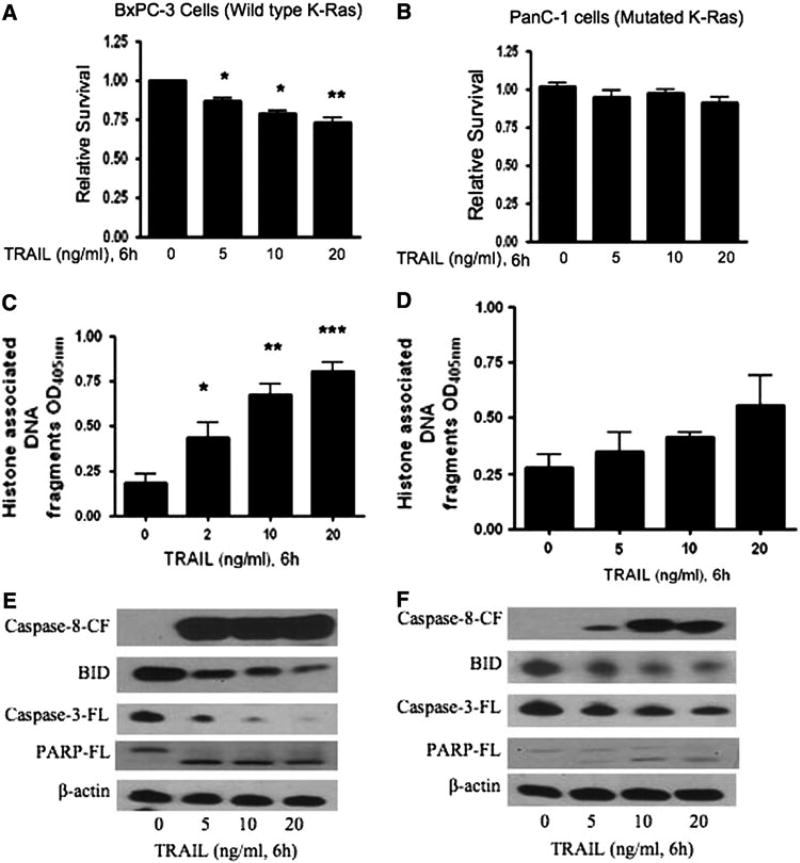Fig. 1.
TRAIL sensitivity and resistance in Pancreatic BxPC-3 and PanC-1 cancer cells. BxPC-3 (pancreatic), having wild-type K-Ras gene, and PanC-1 (pancreatic) cancer cells, having a mutation (G–D) at codon 12 in K-Ras gene, were treated with different concentrations of TRAIL (0, 5, 10 and 20 ng/ml) for 6 h. Effect of TRAIL treatment on the survival of a BxPC-3 and b PanC-1 cells was analyzed by Sulforhodamine B assay. Apoptosis by TRAIL was evaluated by cell death detection apoptosis ELISA in c BxPC-3 and d PanC-1 cells. The values are represented as mean ± SEM of three independent experiments (each conducted in triplicate). Statistically significant when compared with control, *P < 0.05, **P < 0.01, and ***P < 0.001. For Western blotting, total cell lysates were prepared as described in the “Materials and methods” section. Representative immunoblots show the effect of TRAIL treatment in e BxPC-3 and f PanC-1 cells, on the cleavage of caspase-8, caspase-3, and full-length Bid and PARP. Each blot was stripped and reprobed with anti-β-actin antibody to ensure equal protein loading

